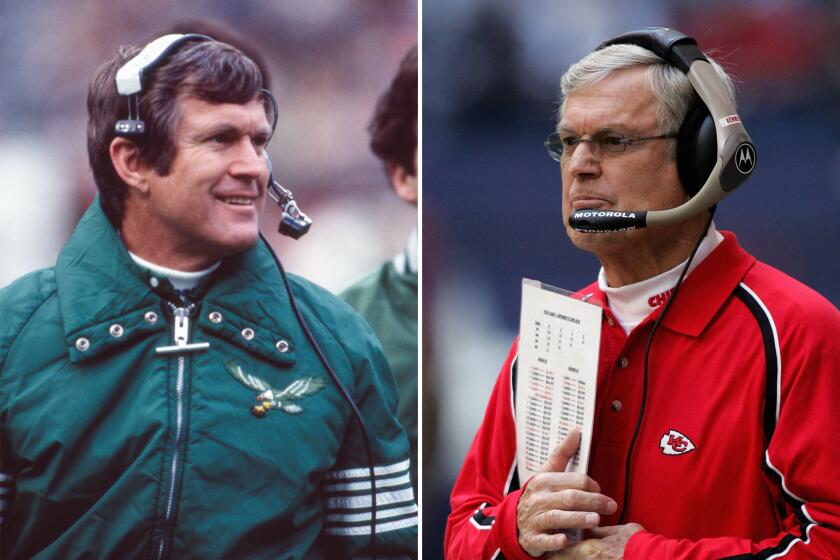Several Dodgers have used platelet-rich plasma therapy
- Share via
PHOENIX — When Zack Greinke visited Los Angeles this week to get his sore right elbow examined, Dodgers physician Dr. Neal ElAttrache prescribed him treatment the team has used for the last five seasons: platelet-rich plasma therapy.
Greinke’s blood was drawn and filtered to concentrate the platelets, which are cell fragments that promote healing. The platelet-rich plasma was injected into his elbow.
Though Greinke’s injection was designed to temper inflammation, the Dodgers have used PRP therapy in recent years on a variety of injuries, many of which they have described as more serious than Greinke’s.
Among them was Chad Billingsley’s partially torn elbow ligament last year. When Billingsley received two platelet injections in the fall he was a candidate to undergo reconstructive elbow surgery, which would have sidelined him for the entire 2013 season.
Billingsley, who pitched five innings of a simulated game Tuesday, said he has been pain-free this spring.
Stan Conte, the team’s director of medical services, isn’t certain of the role the injections played in Billingsley’s recovery.
“We’ve had people who had similar things that have come back without surgery,” Conte said. “We’ve also had people who had similar things who had to have surgery.”
The medical community remains uncertain of the efficiency of PRP therapy, which is in its relative infancy. ElAttrache acknowledged that, but added, “There’s no downside to trying it. It won’t hurt you.”
ElAttrache said something of that nature to then-closer Takashi Saito in 2008. Saito suffered a partially torn elbow ligament in July and Conte estimated that he had a 20% chance of pitching again that season. Not wanting to undergo an operation at age 38, Saito agreed to become the first known professional baseball player to receive the treatment.
“He was the right person because the alternative would have probably ended his career,” said ElAttrache, who was familiar with the early research on PRP and recommended its use to the Dodgers.
Saito returned to pitch in the postseason. He pitched in the major leagues for four more seasons and remains an active player in Japan at 43.
When Claudio Vargas pitched his first game for the Dodgers in July of the following season, he credited PRP therapy with helping him overcome his elbow problems.
Russell Martin pulled a groin muscle in spring training of 2010 and was expected to miss the start of the season. But the catcher was in the Dodgers’ opening-day lineup and said PRP therapy accelerated his recovery.
Professional football and soccer players are also known to have been treated with PRP injections.
Though PRP therapy might improve a player’s chance of returning to the field, it isn’t a cure-all.
Rafael Furcal received a PRP injection in his strained left hamstring in May of 2010, but that didn’t prevent him from landing on the disabled list less than a week later.
Matt Kemp also treated a strained hamstring with a PRP injection in May of last year. Two games after he returned from the disabled list, he strained a different part of the same muscle.
Asked if he thought the injection helped, Kemp replied, “I couldn’t really tell. It didn’t make it worse.”
In addition to repairing damaged tissues, PRP is believed to act as an anti-inflammatory agent. But unlike cortisone, PRP doesn’t have a degenerative effect on ligaments, tendons or cartilage, according to ElAttrache.
That is why ElAttrache elected to prescribe Greinke a PRP injection rather than cortisone one.
“We wanted to protect his cartilage and tendon cells,” ElAttrache said.
The patient remained somewhat in the dark.
“I never heard of it until Billingsley got a couple of them last year,” Greinke said. “But it sounds like it makes a lot of sense, just the thought process of it. I don’t really even know what it’s supposed to do. I don’t have enough information to really be talking about all this stuff.”
More to Read
Go beyond the scoreboard
Get the latest on L.A.'s teams in the daily Sports Report newsletter.
You may occasionally receive promotional content from the Los Angeles Times.










